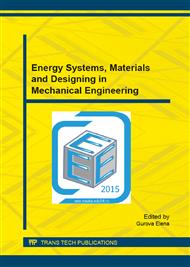p.101
p.107
p.113
p.122
p.128
p.134
p.143
p.147
p.155
Improving Energy Efficiency of the Variable Frequency Drive of the Forced-Draught Fan with the Two-Speed Asynchronous Motor
Abstract:
Based on the example of forced-draught fans of the GOFHWB-100 series hot water boilers (gas and oil fired hot water boilers) power supply reserves of the electric drive with two-speed asynchronous motor have been determined. The structural chart of the developed control system of the electric drive with winding changeover depending on the boiler performance is provided. The paper considers power consumption of electric drive in the variable frequency speed control mode at the motor operation on the high and low speed windings. It presents methods for calculation of energy performance based on computing the equivalent efficiency of the fluid-handling application. The analysis of the efficiency change has proved that the variable frequency control enables electric power savings at the low speed winding by 5 to 6%. The results obtained are recommended to be widely applied at the change-over of the electric drives with two-speed asynchronous motors to the variable frequency control of performance.
Info:
Periodical:
Pages:
128-133
Citation:
Online since:
September 2015
Price:
Сopyright:
© 2015 Trans Tech Publications Ltd. All Rights Reserved
Share:
Citation:


